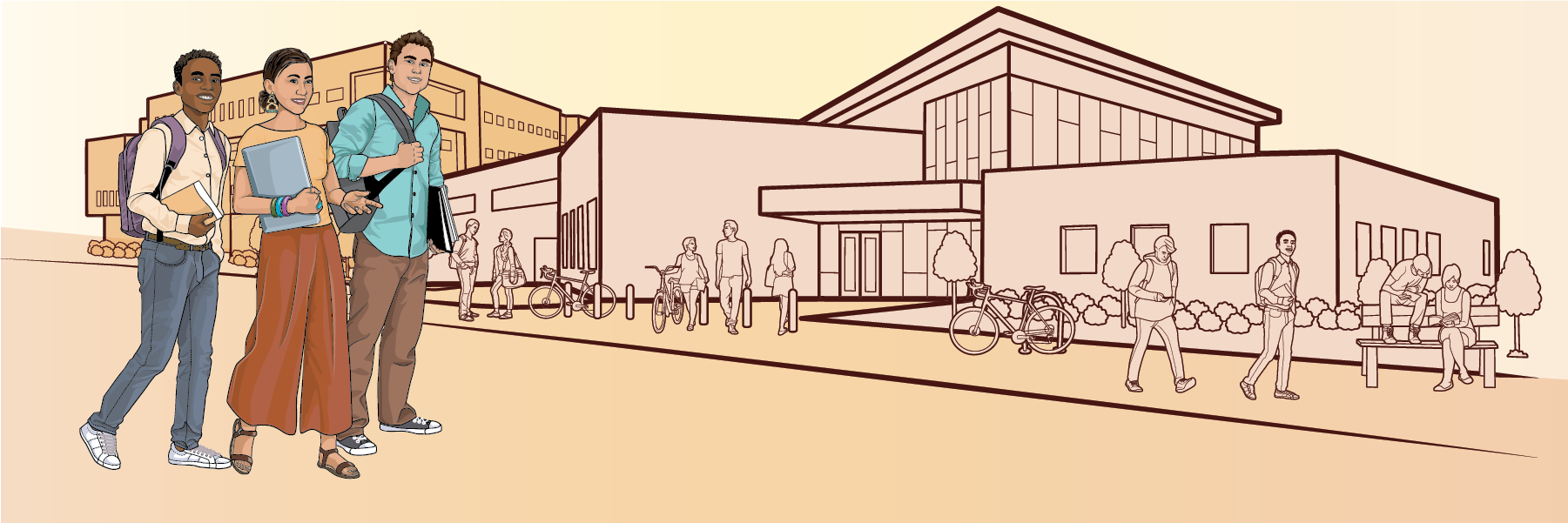Santa Rosa Junior College:
Student Success Coaches
The Beginning
The Dean of Student Success at Santa Rosa Junior College first conceived of a way to use students as an onboarding resource in 2015, when they began to require student success coaching as a necessary first step for incoming students. He identified a need for more robust student support by overhearing student concerns in the Intercultural Center about living in an expensive country, facing a host of barriers to their education. New students were asking settled students for guidance rather than asking busy counseling faculty. So, using Student Equity funds, he decided to build a structure for various initiatives, including hiring a coordinator, building a central lounge with a host of radial offices, and offering student mentors training during the summer so they could become an indispensable resource for other students. Student coaches work together on projects, build lasting relationships, and engage in a meaningful way with the rest of the school. Over time, the program has grown and become more refined, including programming that responds to the arc of the semester, aimed at different times at study skills, self-care, retention, fun, and stress management.
Implementation
The first summer, SRJC required a two-day-per-week, three-hours-per-day training course that spanned July and August before the first incoming class. The pilot program had only four coaches, and the coaches needed to work around existing schedules, from 10 to 25 hours per week. As well as pay, student coaches also have the opportunity to get Work Experience credit, and Community Involvement credit for volunteering. The first autumn roll-out included a welcome day event, in which student coaches initiate conversations with incoming freshmen and offer personalized support for them throughout the semester. Over time, the program grew to include preemptive phone calls and emails during the summer before the semester begins, early-alert phone calls and emails when students are struggling or falling behind, an app that integrates data from Starfish, newsletters, and bespoke coaching for each “House,” the term SRJC uses to designate focused areas of study. Each House has a few student coaches who organize activities, training, and coaching inspired by the majors and potential careers of that House. While there was initial concern that counseling faculty might be threatened by student coaches, the two now work in tandem to provide the highest level of support they can. The student coaches even work with faculty, taking self-reported teaching styles into account when they match-make between specific instructors and incoming students.
Student Experience
The students on both sides of the equation—student coaches and students using the counseling services—report positive experiences from the program. Many student coaches report that they do the work as a way of meeting and helping other students, rather than a way to make money in college. Students using the system report positive results as well, and some of the changes are noticed by faculty, including more games and music in the hallways, greater participation in campus activities, gamification of House activities, increasing use of the app, and mounting involvement from various campus groups.
Early Outcomes
SRJC is now growing the program. The massive coordinated efforts between student coachs, counseling faculty, and instructors is increasing buy-in from the rest of the campus. Where the initial cohort of student coaches had only four students, there are now more than 20. In students’ first year, they can volunteer to become a student coach, and then can get paid for it in their second year. Now the program is trying to extend the coaching hours and ensure that there is always a coach available for drop-in coaching. Coaches are now being asked to address the new funding formula, catching students before they drop out.

